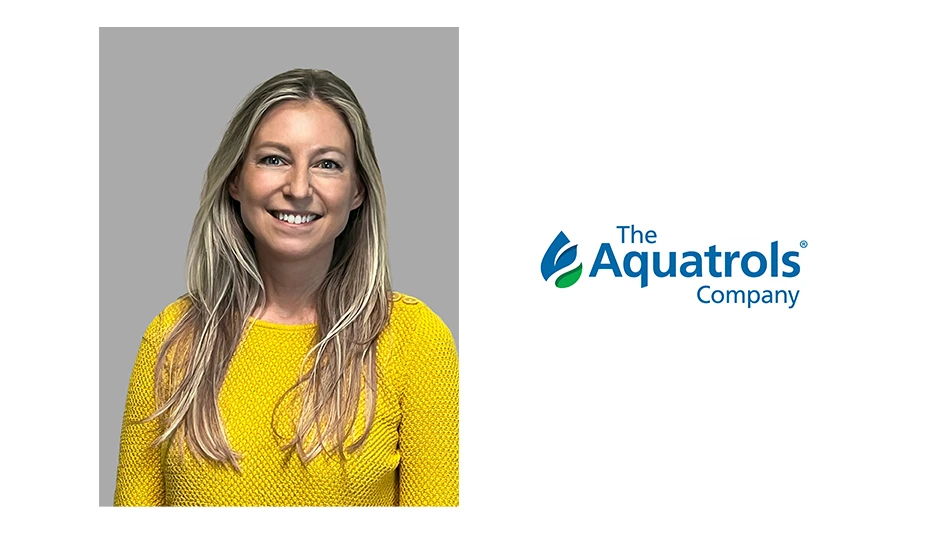
If you are in a situation where you need to reduce your organic matter percentage on sand-based greens, what is a good program to implement? Conventional wisdom tells you to core aerate, remove the plugs, topdress heavily with sand and brush it in to fill the holes. Intuitively, extraction and replacement is more effective then sand injection alone using either high pressure water injection or solid tine and backfilling with sand. But how significant is the difference? In fact, there are people out there that say you cannot effectively manage organic matter without extracting a portion of the root zone (Moeller, A., Lowe, T. 2016). The purpose of the article is to examine the math behind both extraction and replacement or sand injection alone. Understanding the effect each method has from a direct mathematical standpoint will help you create a suitable plan of action that has the least cost and disruption to play.
Suppose you have greens that are testing out to be 4.57% organic matter (OM) within the top 3 inches of your greens. Your goal may be to reduce it close to 3.25% as quickly as possible and maintain it somewhere at or below that threshold in the future. You set the time period that you would like to achieve this at 1.5 growing seasons. During that time period you estimate that you may gain another .43% OM so you set the start point for reduction at 5.00%. How many times do you need to core aerate and with what size tines? Of course, the larger the tines diameter and the tighter the spacing, the fewer the number of applications will be needed. In the case of injection, the same logic applies where the tighter the spacing, the fewer applications you will need to perform the task. This logic is related to the “area of disruption” often spoke about and where the USGA and others have recommended (Hartwiger, C., O’Brien, P. 2001, et al.) that the total of any given growing season fall under the guidelines of 10-20% surface disruption for organic matter control.
For this exercise we will assume that all core holes can be successfully filled with topdressing. Excess sand topdressing left in the turf canopy is assumed zero and subsequently not factored in. Although this does not occur in practice, we adopted this simplification to directly compare core extraction and filling with sand to injection.
An additional component of these calculations is determining the bulk density of the soil mix. The equation used for this calculation comes from the Estimated Bulk Density Calculation from USDA-NRCS (undated) which employs data of the component sand (1.56 g cm-3) and organic matter (0.22 g cm-3) bulk density values. This equation, BD = 100/(% OM/OM BD)+((100-%OM)/SAND BD)) computes to an existing BD of 1.196 g cm-3 after the assumed growth is factored in.

Following core extraction and refilling with sand, the average organic matter content across the green is calculated by using a soil mixing equation adapted from Taylor and Blake (1984). In this equation for core extraction and refilling the mass of organic matter remaining after extraction is divided by the mass of added sand plus the mass of the remaining root zone. Thus, extraction of organic matter and presuming that the added sand contains essentially zero organic matter serves to reduce the average organic matter within the green itself.
For sand injection, the mixing equation is a bit different because no organic matter is removed by coring, so here the mass of the existing organic matter prior to application is divided by the mass of the added sand plus the mass of the existing root zone. Presuming the added sand also contains essentially zero organic matter, injection by itself serves to reduce the average organic matter within the green, in this case by dilution. To reset the total soil weight back to the 0-3-inch zone we then use the new bulk density multiplied by the total volume of the 0-3-inch zone.
The present situation tracks the organic matter changes within the surface 3 inches of a green and 2 by 2 inch spacing on both the coring tines or the sand injector. The calculations are also for 0.5 in diameter tines or equivalently 0.5-inch diameter injection holes. The calculation procedure is, however, adaptable for different depths, spacing and hole diameters.
The results for these calculations following eight consecutive applications of either core extraction and refilling with sand or sand injection demonstrate an essentially equivalent degree of organic matter reduction within the green where core reduced the OM to 3.04% and injection to 3.11% (Fig. 1).

Using conditional probability when coring and refilling allows for a “shortcut” to arrive at the net change in soil weight and percent OM when a total number of applications are entered. Conditional probability factors in the amount of new amendment extracted from the previously filled core holes. In other words, the percent of hitting virgin green space diminishes each time. The equation is 1-((1-area of disruption)X(1- area of disruption) to the power of (# of applications -1) or 1-((1-4.91)X(1-4.91)^(8-1)=33.15%. The product of 33.15% is then multiplied by the original OM weight of the soil profile to arrive at the weight extracted. It will be replaced with sand that is 7.091 times heavier then OM (SAND BD 1.56/OM BD.22). This new sand weight is added to the original sand weight and the new OM weight to arrive at total soil weight. The new OM weight is then divided by total soil weight to arrive at the new percent OM (Table 1)
Sand injection will, of course, result in elevating the green over time. Coring and then filling the holes will add to elevation also but not near as much. It does this because it would be impossible to get 100% of the sand brushed into the aeration holes. About 20-30% more sand topdressing needs to be applied in addition to what the math works out for the aeration holes alone. In general, the greater the area of disruption, the higher the percentage will make it to the holes. Careful consideration has to be given to not oversaturate the surface area between the core holes when attempting to fill them as this may contribute to sand layering.
Of course, using coring and injection together is a viable option. A scenario that may be sensible when on a short timeline to reduce organic matter percentage dramatically is to start off with a very aggressive core aeration and backfilling. This way you get the benefits of extraction without the harvesting of newly amended sections of the green. Coring after multiple injections is just like coring after coring and backfilling. Its effectiveness diminishes because of the extraction of new material already in place. Using .50-inch tines at 1.5 x 1.5 inch spacing is a lot of work but gets you down to 4.45% organic quickly, which is close enough to pick away at it with less disruptive to play injection methods. It will take quite a bit of sand to backfill these holes, but if you can endure the pain, it is a great jump start. The total tons needed to fill JUST the holes for 100,000 square feet will be 106. You will need to order approximately 20-30% more to account for sand left in the turf canopy and waste in general. Following up with multiple injections at 1.5 x 1.5 inch spacing with an average hole size of .328 will slowly get you to your target zone. After eight injections, the OM has dropped to 3.10%. Each injection will use 45.72 tons of sand based on 100,000 square feet (Fig. 2).

Once you have gotten the percent organic matter down to where you want it, the next goal is to maintain that percentage uniformly in the upcoming years. You have already done the hard part. It should not be too difficult to manage going forward. Percent organic matter build up over a given amount of time could span a broad range. It is dependent on the type of turf you are maintaining, fertility inputs, climate, etc. Regular testing will help to determine if you are on target with your maintenance regime.
There has been quite a lot of discussion on the amount of sand required to be applied during any growing season to prevent organic matter build up. Again, there are many variables that could influence this. Research and surveys have put the range as low as 18 or as high as 50 cubic feet per 1,000 square feet (O’Brien, P., Hartwiger, C. 2003., Gaussoin, R.). For the most part, it does not matter how you get it there, but common sense would have you using the several known methods in combination while making sure it stays in the target zone. At this point the target zone could be 0 to 2.5” in depth. In reality, once organic matter is under control, the best thing you can do is make sure you have a reasonable topdressing program that uses light infrequent applications to thoroughly cover 100% of the surface area. This method covers the surface area organic build up. To make sure organic build up stays diluted underneath the canopy and in the most active root zone area, some form of aeration and incorporation method should be used. It could be a combination of several methods such as coring and replacing, injection, deep verticutting and replacing, or solid tine and backfilling. Each has its own attributes. The positive thing is that since you are starting at a good point, the total area of disruption does not have to be as dramatic as when your goal was to drop organic percentage. Consider leaning toward methods that have tighter spacing but with smaller holes or verticut lines to ensure a more homogeneous coverage. Keep in mind that core holes smaller then 3/8" are very difficult to backfill with sand. Our soil mixing tools can be useful in making decisions on maintenance.

Table 2. Demonstrates a maintenance regime after the organic matter percentage has been dropped to a healthy level. It is based on the assumption that there is an average of a .30% increase in organic matter percent per year for the entire 2.5-inch zone. It is acknowledged that the OM growth is greatest near the surface and progressively less with depth. This assumption can and will fluctuate in different climatic regions and will change with differing maintenance inputs and turf varieties.
If you are able to replace all extracted material properly, coring and replacement will slightly exceed straight injection from a mathematical standpoint in reducing organic matter percentage by weight. Relying on straight coring alone would be very labor intensive and disrupt play quite a bit during your short corrective time period. Because of the injection method’s low impact on playability, you may want to seriously consider incorporating this method into your program. Could you even try to use injection all by itself? The math should help you decide.
Table 3. Shows the impact of tine size and spacing or comparable sizing for injection on sand material needed and impact at certain levels on OM reduction.


Explore the April 2018 Issue
Check out more from this issue and find your next story to read.
Latest from Golf Course Industry
- Smart Greens Episode 1: Welcome to the digital agronomy era
- PBI-Gordon promotes Jeff Marvin
- USGA investing $1 million into Western Pennsylvania public golf
- KemperSports taps new strategy EVP
- Audubon International marks Earth Day in growth mode
- Editor’s notebook: Do your part
- Greens with Envy 66: A Southern spring road trip
- GCSAA’s Rounds 4 Research auction begins





